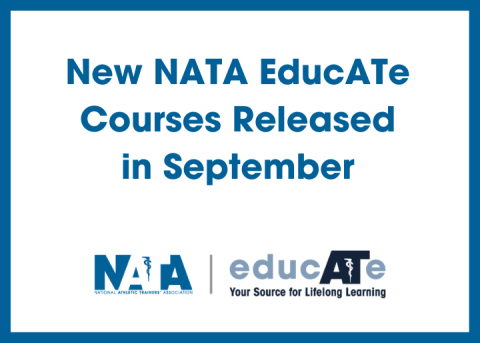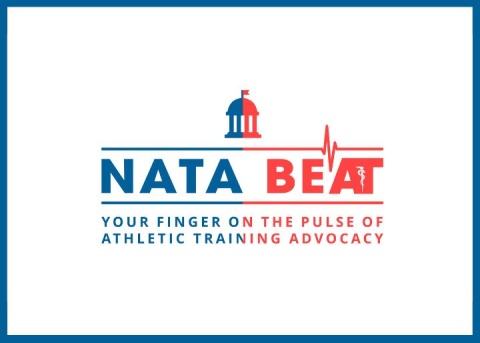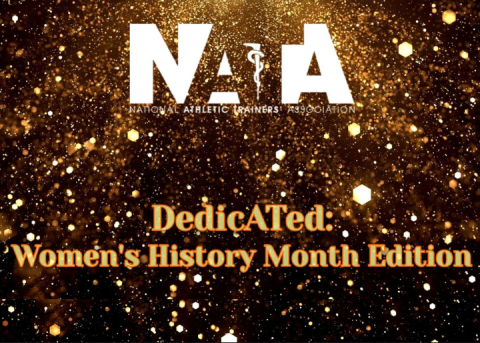
As your source of lifelong learning, NATA EducATe provides users with an extensive educational library, a customizable experience, the ability to interact with peers and more.
New courses are consistently being added to the platform to ensure you have the knowledge needed to stay up to date in your practice – as well as earn CEUs. Here’s a look at the courses released in September. Visit NATA EducATe for more information on these and other courses at your fingertips.
Treatment of the Athlete with Mechanical Low Back Pain: Where does Manual Therapy Fit In?
By Sayers John Miller, PhD, PT, ATC
This course explains the mechanisms of the effects of manual therapy on mechanical low back pain. It also defends the use of manual therapy in the treatment of their patients with mechanical low back pain. In addition, it discusses a treatment plan for a patient with mechanical low back pain that includes manual therapy, exercise and neuroscience education.
NATA Bridge Statement: Management of Sport-Related Concussion
By Johna Register-Mihalik, PhD, LAT, ATC
This webinar provides background and content from the current NATA Bridge Statement on Concussion Management to help address this gap. It defines key updates to concussion practice evidence as it relates to athletic trainers. It also explains the role of mental health screening, return to school strategies and return to sport strategies in concussion management. It evaluates evidence concerning exercise and rehabilitation post-concussion.
Surgical Intervention: Lumbar Spine Discectomy
By Robert Watkins, IV, MD
This course describes the anatomy of the spine and discs. Secondly, it aims to help ATs recognize and diagnose injuries related to the spine and discs. It also differentiates the surgical options and employment of surgical procedures for disc injuries.
Current Understanding of the Relationship Between Cumulative Workload and Injury in Youth Team Sport
By Katie Sniffen, PhD, ATC
This course defines internal and external workload measures and describes the relationship between workload measures and injury risk in youth team sports. It also discusses the limitations of current literature regarding the relationship between workload and injury risk in youth team sport. Furthermore, it discusses the opportunities for future research in improving understanding of the relationship between workload and injury risk in youth team sport.




